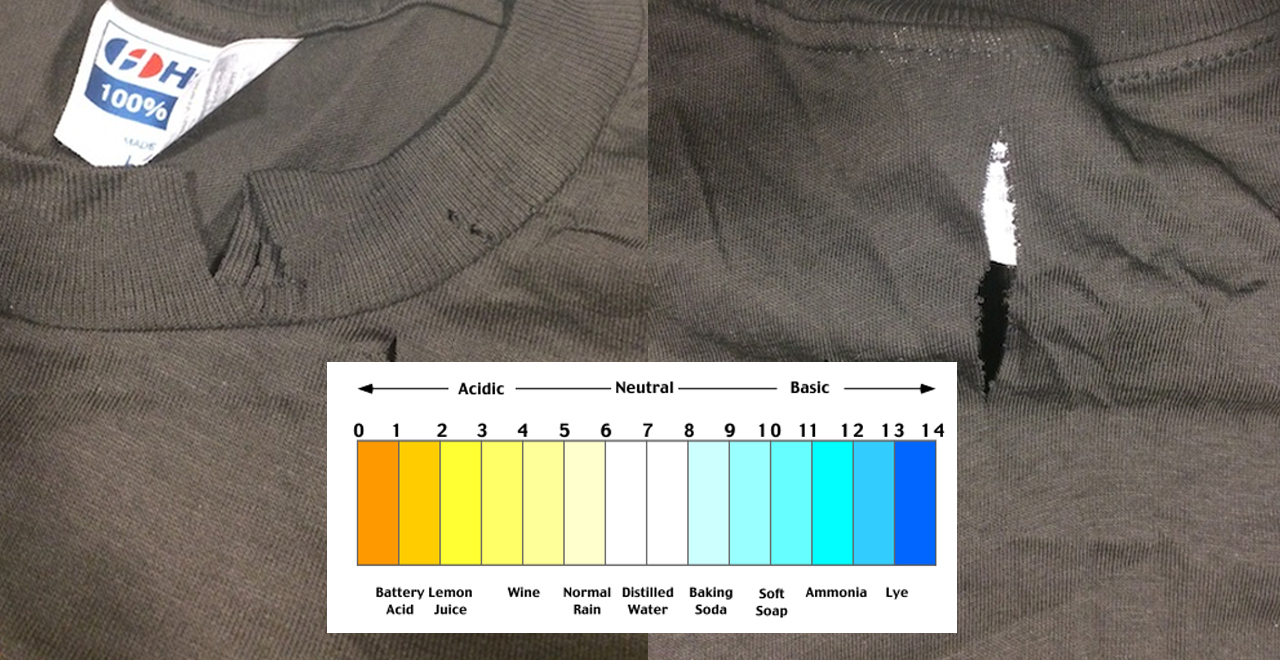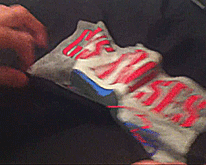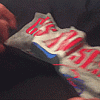Demonstration
Dry Rot: Can You un-pHuck Your T-Shirt?
What is Dry Rot?
Surely you’ve done it. It’s mail day, and there’s a package with your name on it. You tear open the mailer and inside is that deadstock t-shirt you ordered last week. As you slip your arms through the holes and pull it over your head, you hear that unmistakable sound of fabric ripping. You’re not Hulk Hogan (hell, you’re not even Brooke Hogan), but somehow you’ve summoned the super-human strength to rip through a t-shirt like it’s Wrestlemania 3? It might be all of the steroids they’re putting in our chicken these days, but more than likely something just wasn’t right about that tee.
“It was deadstock though, it should be perfect, right?” Nope. That’s actually one of the key factors in this t-shirt phenomenon called Dry Rot that weakens the fabric to the durability of wet paper. The other factors WERE that the shirt had to be black, 100% cotton, and from the early to mid-1990s also. (Dry rot will still affect a 50/50 poly/cotton blend, though it just deteriorates the cotton portion and leaves behind a paper-thin, see-through, poly shirt.)
Notice how I said “were?” That’s because it’s about to get worse.
Last month on a trip to New York for a deadstock lot, we picked up about a thousand band and concert t-shirts ranging from 1994-2002. We checked for dry rot on a few of the high-risk tees by giving the fabric a little stretch and everything checked out fine. Affected t-shirts won’t stretch when pulled, the fabric will just split. By chance, one of the shirts that were far out of the early 90s danger zone was given a little tug and unexpectedly, it ripped. Whatever this mystery cancer is that plagues the deadstock shirts from the 90s is back. Now shirts from as late as 2002 have it. We tested every 100% cotton black shirt in the lot and found over 130 that were infected with dry rot. We even found that we had multiples of the same shirt in which some had dry rot and others didn’t. While this was a heartbreaker that Nicholas Sparks couldn’t even write, we knew that we were sitting on a goldmine of information in fabric samples.
After a number of phone calls and dead-end referrals, we finally made a connection with someone from the Cotton Inc headquarters (you know, “The fabric of our lives” people?) Backed with decades of textile knowledge paired with access to labs and chemists, he requested we send in some samples for testing. Among other samples, we sent them 2 identical shirts from the same batch, but only 1 was infected with dry rot. A couple of weeks later we got our answer to the mystery that had been eating our precious black deadstock t-shirts.
Disclaimer: I’m not a rocket surgeon and only partially understand this explanation. Mostly I’m just repeating things. So after the kind folks at Cotton Inc did some science stuff on the fabrics, this is what they found. The culprit behind this fabric deteriorating disease is Sulfur.
What Causes Dry Rot?
Turns out that Sulfur based dyes are often used when the price of fiber-reactive dyes is too expensive. Black sulfur dyes are the hardest to oxidize, a process done after the dyeing. If not washed, over time the sulfur becomes insoluble and the fabric becomes acidic. Over the course of years, the acid slowly deteriorates the cotton to the point where the integrity of the fibers are impacted. (So this problem should actually be called “Acid Rot”) While fabric that has already reached this point can not be saved, there is some good news.
Myths About Dry Rot
- It’s created when the fabric is exposed to moisture, doesn’t dry fully, and leads to mold that deteriorates the fabric.
- It’s created by being stored in dry environments for extended periods of time.
- It’s the result of being over-cured in the screen printing process.
- Dry rot only occurs on black deadstock tees from the 1990s. (We’ve seen instances from the late 80s and 2000s.)
- You have to continue to wash a black vintage t-shirt because dry rot can strike at any time. (One wash is sufficient, it’s neutralized with one wash)
- You can reverse dry rot once the damage has been done. (There’s been a lot of people who have claimed they can do it but no one has ever proven it despite us offering a $1000 reward.) All you can do is stop further damage to the fabric, If it’s in a state where it can be torn (pH in the 4s), it’s trash, you might consider framing it.
Can you get dry rot on white T-shirts?
No. If your white shirt has similar dry rot symptoms, it’s usually one of two things.
1) The shirt has just been worn out. It’s thin and it rips like dry rot, but it’s not, it’s just a worn-out t-shirt.
2) It’s been over-treated. And that’s why we see it so often in white. People will bleach it too much trying to get rid of the armpit or collar stains and roast the fabric. One thing we have yet to find is a dry rot t-shirt in deadstock white, which proves what we know as dry rot only originates in black deadstock t-shirts.
The black dye that causes the dry rot is acidic, so that’s on one end of the pH scale. Bleach is alkaline and on the other end of the spectrum. The further you deviate from the neutral zone, the more harsh it is on your tees.
Is there a cure for vintage t-shirt dry rot?
No. Not currently. And although we hope there is – we don’t believe there ever will be. There have been several claims/rumors in the vintage t-shirt community that there is a cure, but it’s just being kept secret. Most recently a user on Instagram gained quite a bit of attention by claiming he was close to finding a solution, he got quite a few testimonials from notable sellers and was about to start accepting customers. But the hype died out and sadly, nothing came of it.
We feel that once the integrity of the cotton fibers has been compromised enough by the acidity, you can’t reverse the damage.
How Can You Test For Dry Rot?
The easiest way is to just tug on the shirt, but make sure to do it in different areas of the garment. For reasons not entirely clear, sometimes only certain sections of a shirt will be rotted and if you only test one spot, it might not tell the full story. If it’s a t-shirt you’ve purchased and you don’t want to damage it – a lot of people in the community suggest doing a micro-tug on one of the lower inside seams using just your index finger and thumbs, that way if it does rip you stand a better chance of returning the shirt because the tear will be very tiny and nearly undetectable.
But what if you don’t want to risk damaging the shirt at all?
Dry rotted t-shirts have a distinct smell, but so do regular deadstock t-shirts so it can be tough to determine the difference. According to @cody_tavares t-shirts in the later stages of rot will leave black dust on your fingers when you run your fingers across them. He was even able to spot a dry-rotted tee in a listing of eBay because the black dust was visible on the tag in the photograph. When buying any deadstock t-shirt online, be on high alert that it might be dry-rotted, and ask the vendor to tug on it before you buy it.
Buy a Digital pH Meter
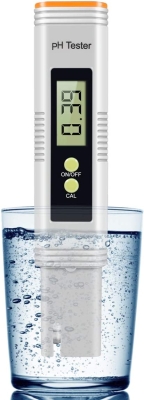 We did some digging on Amazon for the least expensive, highest-rated one. We found one that’s only $10.99 – with 4.8 stars out of 5 – with nearly 2500 ratings.
We did some digging on Amazon for the least expensive, highest-rated one. We found one that’s only $10.99 – with 4.8 stars out of 5 – with nearly 2500 ratings.
85% of customers gave it a perfect score.
Buy it here.
Testing for Dry Rot using a pH Meter
- Grab a sizable glass from your kitchen.
- Fill it up halfway with regular tap water.
- Stuff your dry rot shirt into the glass so it soaks up the water.
- Let sit for 30 mins.
- Take the shirt and out ring the water out of it back into the glass.
- Dip your pH tester into the water.
- Consult the pH chart below or the one that comes with your pH meter.
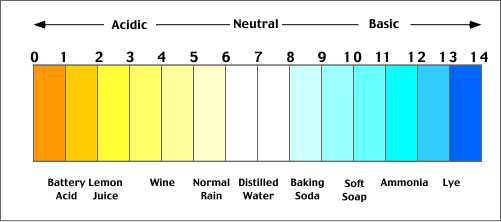
We know that shirts don’t start to rip until they have reached a pH balance in the 4s, about the same acidity as a glass of orange juice. The lower the pH number, the more acidic (water has a pH balance of 7). By letting part of a deadstock shirt soak in water, we can actually test the acidity of the water and know if a shirt is vulnerable to dry rot and how close it is. A shirt that reads a pH balance of 4 or 5 will have partial fabric deterioration, but will not be at the easily ripped point yet. Washing the shirt at this phase will neutralize the fabric and halt its deterioration, thus saving it from future dry rot. Unfortunately, I don’t believe you can t save a tee once it’s gone past the point of no return. But feel free to try to prove me wrong.
BTW, while looking for other non-invasive ways of testing we tried using a high-powered microscope to test for dry rot but we were unable to spot any difference between undisturbed dry rot cotton and stable cotton.
Maybe we’ll look into dry rot-sniffing dogs?
So there it is. After years of scratching heads and drying tears, we finally have an answer to what causes dry rot. It couldn’t have come at a better time either, because we’re about to start seeing a lot more of it. We now know that the use of Sulfur based black dyes was used all the way into the early 2000s, and are likely still being used today. The key to preventing dry rot lies in early detection.
Check out my recent appearance on the Virtual Flea with Chris from 1980 Something Co where we did a deep dive into “dry rot.” There’s also a demonstration on how to test for it so you can save some tees at the 20:45 mark! And visit Wax & Threads for 100% dry rot-free t-shirts.
Defunkd may receive a small affiliate commission from purchases made from the link to Amazon in this article.


